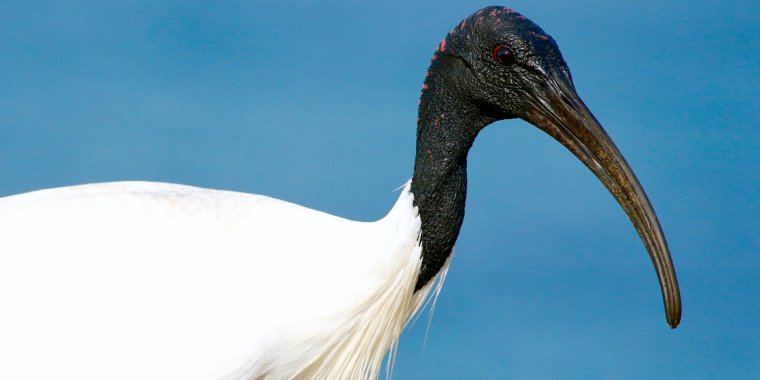| News / Science News |
Ancient Egyptians collected wild ibis birds for sacrifice, says study
An international team of scientists report ancient Egyptians captured sacred ibises (Threskiornis aethiopicus) from the wild for use in ritual sacrifice rather than domesticating the birds.

Ibis. Photo: James Wainscoat/Unsplash
Millions of mummified ibis birds have been found in Egyptian tombs and catacombs in Saqqara and Tuna el-Gebel, and Egyptologists have reported they were sacrificed to the god Thoth, who is often depicted with the head of an ibis, the way Horus is shown with the head of a falcon and Bast with the head of a cat.
Lead author Sally Wasef of Australia's Griffith University explained to the press, "The ibis was considered [to represent] the god Thoth, the god of wisdom, the god of magic, the god of judgment, writing all sorts of things [...] If you had a boss that annoys you and you don't feel like you are getting a good judgment from him or you want fairness and justice, you go and ask Thoth to interfere and in return you promise to offer him an ibis, a mummified ibis, in his annual feast."
Some scholars have suggested Egyptians raised or farmed the birds to make them available in the necessary numbers. While some ancient Egyptian writers made passing mention of feeding bread and plants to ibises, according to Wasef archaeologists have not yet turned up any hatchery structures.
The team collected DNA samples from mummified birds collected from six separate catacombs including sites at Abydos, Saqqara, and Tuna el-Gebel with permission from the Egyptian Ministry of State for Antiquity, and several museums offered to send tissue samples from the mummified ibises in their collections.
They were able to extract complete mitochondrial DNA sequences from fourteen. These they compared to those of 26 modern ibises from different parts of Africa — ibises of this species disappeared from Egypt itself during modern times.
They found the DNA sequences from the ancient birds to be relatively diverse. If the birds had been domesticated or even heavily farmed, they reasoned, the Egyptian specimens would have shown only a little genetic diversity.
According to the researchers, sacrifice and mummification of sacred ibises was common in Egypt from about 664 b.c.e. to 250 c.e., from the twenty-sixth dynasty into the early period of Roman Egypt. (Wikinews)
YOU MAY ALSO LIKE





